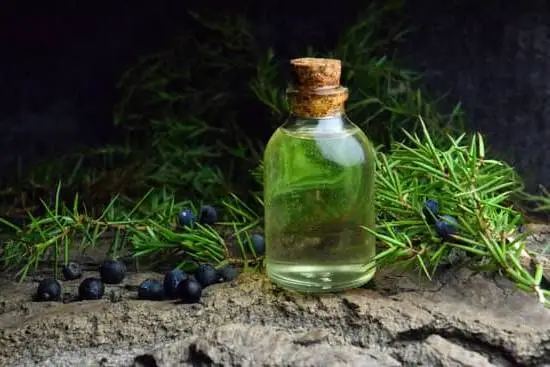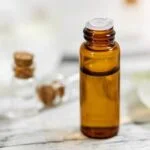Aromatherapy has been used for centuries as a natural way to promote relaxation, relieve stress, and enhance overall well-being. One popular method of aromatherapy is through the use of aromatherapy salts. In this guide, we will explore how to make your own aromatherapy salts at home, allowing you to customize the scent and benefits to suit your preferences.
Aromatherapy salts are a combination of essential oils and fragrances blended with natural salts, such as Epsom, Dead Sea, or Himalayan salt. These salts are commonly used in bath soaks and scrubs to help soothe sore muscles and calm the mind. The benefits of aromatherapy salts include improved sleep, reduced stress and anxiety, relief from muscle pain, and detoxification of the body.
By creating your own aromatherapy salts, you have the freedom to choose the specific scents that resonate with you and cater to your unique needs. Whether it’s lavender for relaxation, eucalyptus for invigoration, or peppermint for soothing sore muscles, the possibilities are endless when it comes to customizing your own blend of aromatherapy salts.
In the following sections, we will delve into the different aspects of making aromatherapy salts at home, from choosing the right scents and base salt to packaging and utilizing them in your self-care routine.
Essential Oils and Fragrances
When making aromatherapy salts, choosing the right essential oils and fragrances is crucial to achieving the desired therapeutic benefits. Essential oils are natural plant extracts that can promote relaxation, reduce stress, and improve overall well-being. When selecting scents for your aromatherapy salts, it’s important to consider the specific properties of each essential oil and how they can benefit your mind and body.
Lavender essential oil is a popular choice for aromatherapy salts due to its calming and soothing properties. It can help alleviate anxiety, insomnia, and tension, making it an excellent option for relaxation baths. On the other hand, citrus oils such as orange or lemon are invigorating and refreshing, perfect for rejuvenating baths or uplifting mood-enhancing blends.
Before adding any essential oil to your aromatherapy salts, it’s essential to research their individual properties and potential contraindications. Some essential oils may not be suitable for certain individuals, such as pregnant women, children, or pets. Additionally, ensure that you are using pure, high-quality essential oils to achieve the best results in your aromatherapy salt blends.
Experimenting with different essential oil combinations can also be fun and exciting. You can create custom blends based on your mood or specific needs. Pairing lavender with chamomile for a calming bath salt blend or combining eucalyptus with peppermint for a refreshing and invigorating experience are just a few examples of how you can customize your aromatherapy salts to suit your preferences and wellness goals.
Selecting the Best Base Salt
When it comes to making aromatherapy salts, one of the most important decisions you’ll need to make is choosing the best base salt for your mixture. Each type of salt has its own unique properties and benefits, so it’s essential to understand the differences between Epsom, Dead Sea, and Himalayan salts before deciding which one to use in your aromatherapy creations.
Epsom salt, also known as magnesium sulfate, is a popular choice for aromatherapy salts due to its ability to soothe sore muscles and reduce inflammation. It is an affordable option that can easily be found at most drugstores and supermarkets. Epsom salt is also known for its detoxifying properties and can help promote relaxation and stress relief when used in bath soaks.
Dead Sea salt, on the other hand, is sourced from the Dead Sea in Israel and contains a high concentration of minerals such as magnesium, potassium, and calcium. This type of salt is particularly beneficial for those with skin conditions such as eczema or psoriasis due to its hydrating and exfoliating properties. Additionally, Dead Sea salt can help improve circulation and promote overall skin health.
Himalayan salt is mined from ancient sea beds in the Himalayan mountains and is known for its distinctive pink color. This type of salt contains a variety of minerals and trace elements including calcium, potassium, iron, and magnesium. When used in aromatherapy salts, Himalayan salt can help detoxify the body, improve hydration, and promote relaxation.
Incorporating any of these base salts into your aromatherapy creations can enhance the overall benefits of your homemade products. Whether you choose Epsom, Dead Sea, or Himalayan salt largely depends on your desired outcomes and personal preferences. By understanding the unique properties of each type of salt, you can select the best base for your custom aromatherapy salts.
Tools and Materials Needed for Making Aromatherapy Salts
Making your own aromatherapy salts at home is a fun and rewarding DIY project that allows you to customize the scents and ingredients to suit your personal preferences. To get started, you will need a few essential tools and materials. Firstly, you will need a mixing bowl, measuring spoons, and a spoon for stirring. It’s important to use non-metallic bowls and utensils to avoid any chemical reactions with the salts or essential oils.
Additionally, you will need high-quality base salt such as Epsom salt, Dead Sea salt, or Himalayan salt. Each type of salt offers unique therapeutic benefits, so choose one based on your specific needs and desired outcome. You will also need essential oils in your preferred scents, as well as dried herbs or flowers for added fragrance and visual appeal.
To preserve the quality of your aromatherapy salts, it’s important to store them in airtight containers that are not exposed to direct sunlight or moisture. Clear glass jars are a popular choice for packaging aromatherapy salts as they allow you to showcase the colorful blend of salts and botanicals inside. By following these guidelines and using high-quality materials, you can create your own customized aromatherapy salts for use in relaxing baths and self-care rituals.
In addition to these basic materials, consider investing in labels or tags for your jars so that you can easily identify the different blends of aromatherapy salts you create. This is especially helpful if you plan on making multiple variations with different scents and ingredients. With the right tools and materials on hand, making aromatherapy salts at home becomes a simple and enjoyable process that allows you to reap the benefits of personalized wellness products tailored to your individual needs.
Step-by-Step Guide
Aromatherapy salts are a fantastic addition to any self-care routine, offering numerous benefits for relaxation and wellness. Making your own aromatherapy salts at home is not only cost-effective, but it also allows you to customize the scents and ingredients to suit your personal preferences.
In this step-by-step guide, we will walk you through the process of making aromatherapy salts so that you can enjoy the soothing properties of these luxurious bath salts in the comfort of your own home.
To start making your own aromatherapy salts, you will need a few essential materials and tools. First and foremost, you will need a base salt such as Epsom salt, Dead Sea salt, or Himalayan salt. Additionally, you will need essential oils and fragrances of your choice to add delightful aromas to your bath experience. Other materials such as dried herbs, flowers, and natural colorants can also be incorporated to enhance the visual appeal and therapeutic benefits of your aromatherapy salts.
Once you have gathered all the necessary materials, it’s time to start crafting your personalized aromatherapy salts. The first step is to combine the base salt with the essential oils and fragrances in a large mixing bowl. It’s important to mix these ingredients thoroughly to ensure that the scent is evenly distributed throughout the salt. Next, if desired, you can add dried herbs or flowers for their added aromatic qualities and visual appeal.
Finally, if you wish to add colorants for aesthetic purposes, now is the time to do so. Mix all the ingredients until well combined and then transfer them into an airtight container for storing. With these simple steps, you now know how to make aromatherapy salts at home.
Customizing Your Aromatherapy Salts
When it comes to making your own aromatherapy salts, the customization possibilities are endless. One popular way to enhance your homemade aromatherapy salts is by adding herbs and flowers. Lavender, rose petals, chamomile, and mint are just a few examples of botanicals that can be included in your DIY aromatherapy salts. Not only do these additions provide a beautiful aesthetic touch, but they also contribute their own unique therapeutic properties to the mix.
Herbs like lavender and chamomile are known for their calming and soothing effects, making them perfect additions to aromatherapy salts intended for relaxation and stress relief. On the other hand, peppermint and eucalyptus can add a refreshing and invigorating element to your salts, ideal for use in an energizing bath blend.
When incorporating herbs and flowers into your aromatherapy salts, it’s important to ensure they are thoroughly dry before mixing them with the salt base to prevent moisture from causing clumping or spoilage.
In addition to herbs and flowers, many DIY enthusiasts enjoy adding natural colorants to their aromatherapy salts. This not only enhances the visual appeal of the salts but also allows for creative expression.
Mica powders, dried plant-based pigments, and even food-grade coloring agents can be used to add a pop of color to your custom blends. Keep in mind that some natural colorants may transfer color to the bathwater, so it’s best to test a small amount before using larger quantities in your aromatherapy salt creations.
| Herbs & Flowers | Natural Colorants |
|---|---|
| Lavender | Mica Powders |
| Rose Petals | Natural Pigments |
| Chamomile | Food-Grade Coloring Agents |
Packaging and Storing Aromatherapy Salts
When it comes to making your own aromatherapy salts, it’s important to also think about how to properly store and package them. Proper storage and packaging not only help preserve the quality of the salts but also enhance their visual appeal when gifting them to others.
Choosing the Right Containers
The first step in packaging your aromatherapy salts is choosing the right containers. Glass jars with airtight lids are a popular choice for storing salts as they help maintain their freshness and fragrance. Additionally, clear glass jars allow you to showcase the colorful salts and any added herbs or flowers.
Labeling Your Aromatherapy Salts
Once you’ve chosen your containers, it’s important to label your aromatherapy salts. Clearly label each container with the type of scent used, the date they were made, and any special instructions for use. This not only helps you keep track of your inventory, but it also provides important information for anyone receiving the salts as a gift.
Preserving Aromatherapy Salts
To ensure the longevity of your aromatherapy salts, store them in a cool, dry place away from direct sunlight and moisture. This will help prevent clumping and preserve their fragrance. It’s also recommended to use the salts within six months to a year for optimal potency.
By following these tips for packaging and storing your aromatherapy salts, you can extend their shelf life while maintaining their effectiveness and aesthetic appeal. Whether you’re making them for personal use or as thoughtful gifts for loved ones, proper packaging and storage are essential in enhancing the overall experience of using aromatherapy salts.
Using Aromatherapy Salts
Aromatherapy salts are a wonderful addition to any self-care routine, providing a natural way to relax and promote wellness. Incorporating aromatherapy salt baths into your regular regimen can help reduce stress, improve sleep, and soothe sore muscles. Below are some tips on how to make the most of your aromatherapy salt baths and fully enjoy their benefits.
Preparing Your Aromatherapy Salt Bath
To prepare your aromatherapy salt bath, start by filling your bathtub with warm water. Add about a cup of your homemade aromatherapy salts to the water as the tub fills, allowing them to dissolve completely. You can also add a few drops of essential oils to enhance the aromatic experience. Stir the water to ensure that the salts are evenly distributed.
Relaxing in Your Aromatherapy Salt Bath
Once your bath is ready, take some time to unwind and relax in the soothing water. Close your eyes, take deep breaths, and allow the calming scents of the essential oils to wash over you. Consider dimming the lights or playing soft music to create an even more tranquil atmosphere. Take at least 20 minutes for your soak, allowing both your body and mind to fully benefit from the rejuvenating properties of the aromatherapy salts.
Post-Bath Care
After you have enjoyed your aromatherapy salt bath, be sure to rinse off in clean water before drying off. It’s also important to drink plenty of water following a salt bath, as soaking in a salty solution can dehydrate your skin.
Once you’re dried off and feeling refreshed, take some time for yourself – whether that means cozying up with a book or simply resting in a quiet space. Incorporating these steps into your self-care routine regularly can provide ongoing benefits for relaxation and overall well-being.
Conclusion
In conclusion, the use of aromatherapy salts in relaxation and wellness cannot be overstated. Aromatherapy salts offer a natural and effective way to unwind and de-stress after a long day.
By combining the benefits of essential oils with the healing properties of various types of base salts, you can create a luxurious spa-like experience right in the comfort of your own home. Additionally, the customization options allow you to tailor your aromatherapy salts to your specific needs and preferences, making it a truly personal self-care staple.
Learning how to make aromatherapy salts at home empowers you to take control of what goes into your products, ensuring that they are free from harmful chemicals and made with high-quality ingredients. The step-by-step guide provided in this article offers a simple and accessible method for creating your own aromatherapy salts, allowing you to experiment with different scents, colors, and additives until you find the perfect blend for your relaxation routine.
Whether you choose Epsom, Dead Sea, or Himalayan salt as your base, the end result will be a product that promotes both physical and mental well-being.
By incorporating aromatherapy salt baths into your self-care routine, you can experience the therapeutic benefits firsthand. The act of taking time for yourself and indulging in a luxurious bath infused with aromatic salts is a powerful form of self-care that can help reduce stress, promote relaxation, relieve muscle tension, and improve overall well-being.
So why not give it a try? With just a few simple ingredients and a little bit of creativity, you can elevate your self-care routine with the power of homemade aromatherapy salts.
Frequently Asked Questions
How Do You Make Essential Oil Salts?
To make essential oil salts, start by mixing 2 cups of Epsom salt with 20-30 drops of your preferred essential oil. Stir the mixture thoroughly and let it sit for 24 hours to allow the scent to infuse. Then, store in an airtight container.
How Do You Make Scented Salt?
Making scented salt is easy. Simply mix sea salt or Epsom salt with a few drops of your favorite essential oil or fragrance oil. Stir well to distribute the scent evenly throughout the salt. The scented salt can be used for bath, body scrub, or even as a room freshener.
How Long Do Homemade Bath Salts Last?
Homemade bath salts can last indefinitely if stored in an airtight container in a cool, dry place. However, for optimal freshness and potency of the essential oils used, it’s best to use them within six months to one year of making them. Proper storage is key to ensuring their longevity.

Are you looking for a natural way to improve your health and wellbeing?
If so, aromatherapy may be the answer for you.





